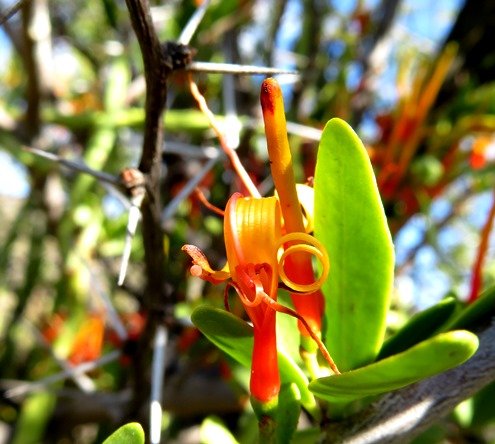Moquiniella rubra flower and thorn tree spines

The photo shows Moquiniella rubra open flower segments curled back and a closed bud with already darkened tip. The green calyx with no sepal lobes to speak of (or the green body of an inferior ovary) is short and the recurving perianth segments not parted to the base.
The long white thorns or spines on the dark branchlet of the Vachellia karroo tree used by this M. rubra plant as its host, remind of the parasitic nature of M. rubra.
Flowering happens in autumn and winter. An ellipsoid berry follows each successful flower. The fruit turns red when ripe, becoming up to about 1 cm long (Vlok and Schutte-Vlok, 2010; Leistner, (Ed.), 2000).

